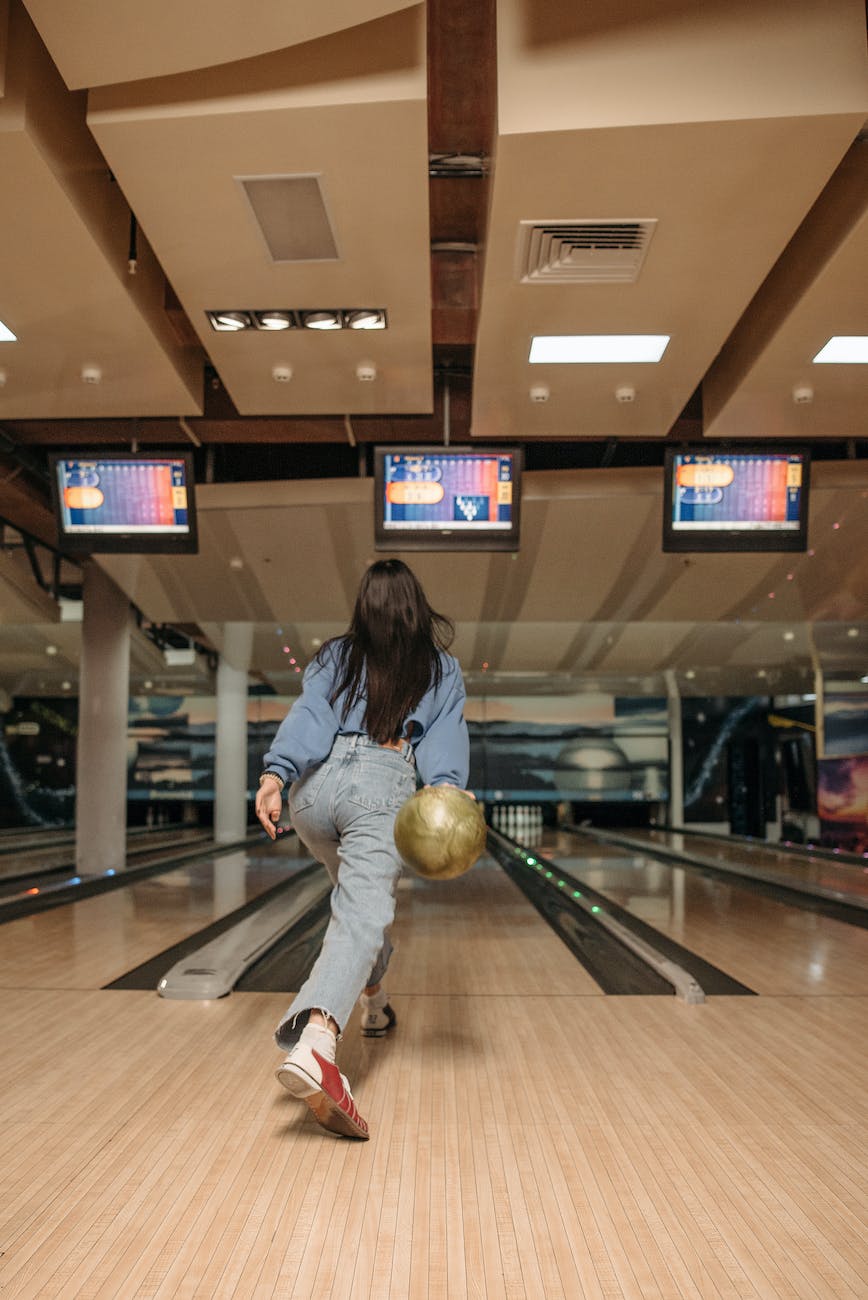Maintaining Head Position During Bowling
The head, being the heaviest part of the human body, significantly affects the body’s center of gravity during bowling. So, where should you place your head? A common issue for bowlers is the tendency for the head to drop when exerting force momentarily.
When the head drops, the swing shortens and it’s harder to exert force over a longer duration. It is crucial to keep your head steady. The trick to doing this is straightforward. From the start, pull your chin down and keep your eyes on the spot. You should not lift your chin. Because lifting your chin can lead to your head dropping, you should pull your chin down from the start. Think of always keeping your gaze and head steady during bowling. When your head and gaze are steady, you can see the trajectory of the rolling ball to the end.
By placing the weight of your head forward, the body’s center of gravity maintains a stable form, creating a good posture to exert force. This stance guarantees speed and rotation.
How Should You Manage Your Opposite Shoulder?
What is the desirable stance for the shoulder? The main issue is how to balance the body, and it’s usually assumed that the shoulders should be leveled for the balance to be correct. However, when bowling, it’s not appropriate to maintain a perfect horizontal level.
In bowling, the more the swinging shoulder drops, the more relaxed the posture becomes and the more effectively the force is transmitted. If you observe the stance of professional bowlers, you’ll notice that the shoulder on the bowling side is slightly lowered. Of course, there are bowlers whose shoulders are excessively lowered, but during the follow-through action, the shoulder comes up a bit. It’s not an easy action to identify.
When watching videos, you tend to focus on the parts you want to learn and improve, so it’s easy to miss these details. Therefore, observe the players’ videos in a broad context. I prefer to analyze the rhythm, balance, and movements of the waist and legs comprehensively.
Lowering your shoulder during bowling is beneficial. But why? If you want to lower the ball, you can lower your knee, but that makes it difficult to exert force and can strain your knee.
Dropping your shoulder allows you to lower the ball while keeping your knee steady. In other words, the swing becomes smoother when the shoulder drops. Ball control becomes easier, and unnecessary force can be eliminated.
If you don’t lower your shoulder, you will throw the ball high, and more force will be applied. Try lowering your bowling shoulder slightly. You’ll feel more comfortable and your swing will become smoother.
What is the Suitable Position for the Right Foot?
When bowlers develop their unique stance, they often ponder how to handle each part of their body. I’ve seen many bowlers contemplating the position of their right foot during steps. Generally, when viewed from behind, it’s said that the direction of the right foot should be around 7 to 8 o’clock. If the right foot goes beyond 9 o’clock, the body’s direction gets twisted.
Some bowlers lift their right foot off the ground. If the kick is strong, the right foot inevitably lifts. Of course, it’s possible to swing without lifting the right foot. When doing this, you shouldn’t bend your ankle or knee. It’s better to straighten your knee. You need to straighten your knee to properly apply the kick. Don’t forget that you need to straighten your ankle as well.
What if the right foot goes to 6 o’clock? If the toes are pointing downwards, the balance becomes unstable. If the sliding foot comes towards the navel, the right foot naturally points to 7 o’clock. There are cases where the right foot turns a lot. If the body falls from the downswing, the right foot is set to turn sideways. If the foot turns, the body is already twisted, and at this point, the ball will move in a diagonal direction. In other words, you end up unintentionally pulling the ball.
The angle of the foot is proportional to the angle of the body. The angle of the body and legs should match. If the angles of the body and foot differ, the body has no choice but to turn.
As mentioned, people with strong kicks tend to lift their right foot, and a strong kick also strengthens the release. If you want to bowl more gently, you can also try bowling without lifting your foot. It reduces force and makes your posture much smoother.
Recording your bowling posture and checking the position of your right foot will help you build a much better stance.
